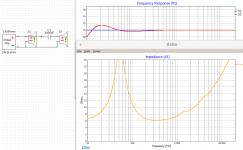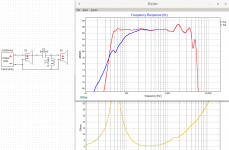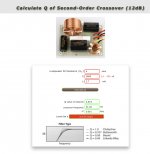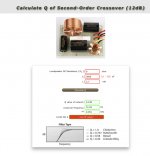I saw the schematics of B&W 801 and 802. They had a 1,000uF capacitor in woofer’s section which is connected in series closet to the woofers. Is this capacitor be a high-pass filter? Not sure whether it’s called passive subsonic filter or not. What is the responsibility of it? Does it used to reduce the bass boom? Can any speakers be simply added the 1,000uF capacitor in series to their woofers for the purpose of bass improvement as did in B&W?
8ohms with 1000uF has an RC time constant equivalent to 20Hz. You would think that value should be a bit bigger if it is a series high pass infrasonic filter. Probably minimum 3300uF would be what I would use as an output coupler on a SE Class A amp.
You'd think so 😉generally.
Attachments
Have a read of this "subwoofer tuning with capacitor" article
Subwoofer Tuning with Capacitor And Resistor
cheers
Subwoofer Tuning with Capacitor And Resistor
cheers
Also check out 'Passive Assist' designs, or maybe '3rd order bass alignment', or 'capacitive boost'.
All of these work to some degree by making the rolloff a 3rd order alignment combined with the 12dB sealed box rolloff. As with any steeper filter in a xover, the knee gets sharper the steeper the order goes. As an effect of the added cap, the extension can be lowered due to the boost at the knee of the rolloff.
Recommended specs are 7<Qms<10, high Xmax or multiple drivers, and a Qtc of 1.1 for box construction for best performance. Added high power resistance can increase the Qtc and also work for the better to achieve the 1.1 spec.
Later,
Wolf
All of these work to some degree by making the rolloff a 3rd order alignment combined with the 12dB sealed box rolloff. As with any steeper filter in a xover, the knee gets sharper the steeper the order goes. As an effect of the added cap, the extension can be lowered due to the boost at the knee of the rolloff.
Recommended specs are 7<Qms<10, high Xmax or multiple drivers, and a Qtc of 1.1 for box construction for best performance. Added high power resistance can increase the Qtc and also work for the better to achieve the 1.1 spec.
Later,
Wolf
You'd think so 😉
it gets complicated by speaker capacitance and inductance.
How it works, is if you have an undersized closed box for a bass driver, say like 20L for an 8" bass, you can dig a bit deeper and steeper on bass by adding a big capacitor:
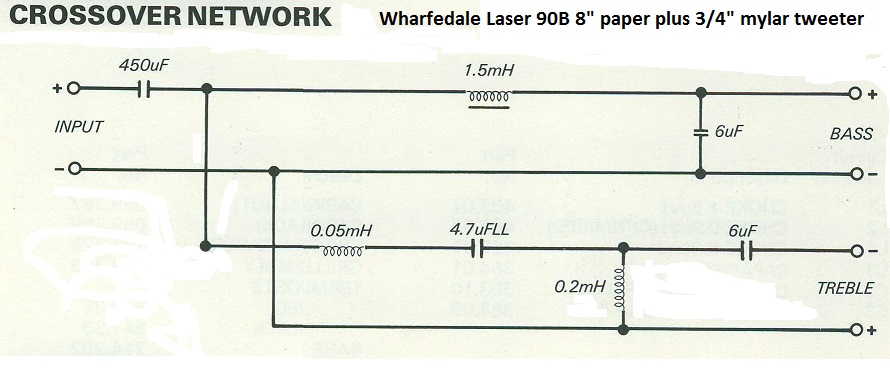
The Wharfedale Laser 90B:
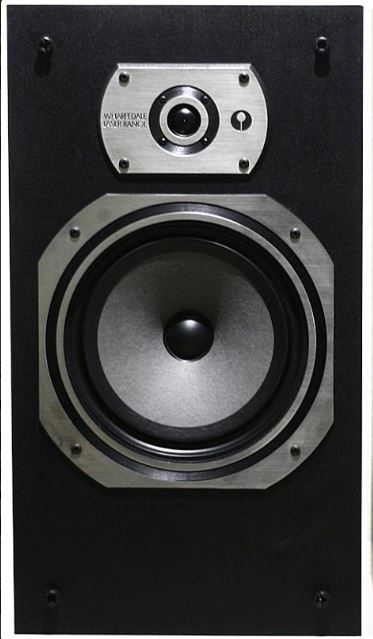
Of course, questions arise about the sonic qualities of a huge electrolytic. Take your chances. 😀
The Wharfedale Laser 90B:
Of course, questions arise about the sonic qualities of a huge electrolytic. Take your chances. 😀
Last edited:
Last edited by a moderator:
I saw the schematics of B&W 801 and 802. They had a 1,000uF capacitor in woofer’s section which is connected in series closet to the woofers. Is this capacitor be a high-pass filter?
Yes, a large capacitor reduces the rise in frequency response of the woofer near its resonance. That is, it works as a 1st order high pass filter.
For example, a 200 μF capacitor will work for an 8 Ohm woofer from a frequency of 50 Hz : below 50 Hz there will be a smooth falloff, above 50 Hz - an even Qtc.
There was an interesting JAES paper by the late A.N.Thiele dealing with the practical applicaction of series capacitors for LF alignments.
Regards
Charles
Regards
Charles
Here is a link to the Thiele paper and subsequent discussions.
AES Journal Forum >> Closed-Box Loudspeaker with a Series Capacitor
It is not downloadable for free unfortunately.
Regards
Charles
AES Journal Forum >> Closed-Box Loudspeaker with a Series Capacitor
It is not downloadable for free unfortunately.
Regards
Charles
Correct. It can also be done second order for a 24dB/octave rolloff.
Could you please let me know the calculation method? I had put the values of components shown in online calculator, and it gave the results on attached. Q are out of range, but that might be fine since we would need the boost at cut-off region. Is it required any specific method for selecting Q?
Attachments
Last edited:
The boost is coming on two fronts, one being that filter Q is going to vary with the impedance. This makes an online calculator inappropriate for the task, doing it by hand would be time consuming and guessing would be hit and miss.
I used a simulator to get there.
I used a simulator to get there.
Yes, protection against overexcursion at very low frequencies (or DC) is a side effect of the design. But the main intention is to get a little lower cutoff frequency with a smallish cabinet. It goes at the cost of a steeper rollof below.
Regards
Charles
Regards
Charles
- Home
- Loudspeakers
- Multi-Way
- 1,000uF Capacitor
